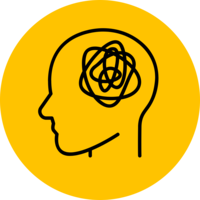Ontario HIV Treatment Network Cohort Study (OHTN)
The OHTN is an open cohort comprised of individuals who have provided documentation of a positive human immunodeficiency virus (HIV)-antibody test or other laboratory evidence of HIV infection, and are patients at a participating clinic throughout Ontario, Canada. The study was initiated in 1994 as the HIV Ontario Observational Database and recruited its first participant in 1995. In that first phase, over 3,000 participants were enrolled and, as of December 2006, 1,656 were still active participants. As of May 2024, the study reports over 8,000 participants enrolled that are living with HIV. On average, participants were 41 years old at enrolment. The majority (60.3%) were MSM (men who have sex with men), although a sizeable minority (14.6%) were female and/or were infected through other modes of transmission. A large proportion (42%) were diagnosed in the 1990s and most enrolled several years after diagnosis. Participants are followed up by attending participating clinics.
Study design
Cohort - open, Cohort - clinical
Number of participants at first data collection
3,206 (participants)
Recruitment is ongoing
Age at first data collection
≥ 16 years (participants)
Participant year of birth
Varied (participants)
Participant sex
All
Representative sample at baseline?
The population receiving HIV care in Ontario, Canada.
Sample features
Country
Year of first data collection
1995
Primary Institutions
University of Toronto
Profile paper DOI
Funders
HIV/AIDS Bureau
Ontario Ministry of Health and Long-Term Care
Ongoing?
Yes
Data types collected


- Computer, paper or task testing (e.g. cognitive testing, theory of mind doll task, attention computer tasks)
- Interview – face-to-face
- Physical or biological assessment (e.g. blood, saliva, gait, grip strength, anthropometry)
- Secondary data
- None
- None
- Healthcare data
Engagement
Keywords



